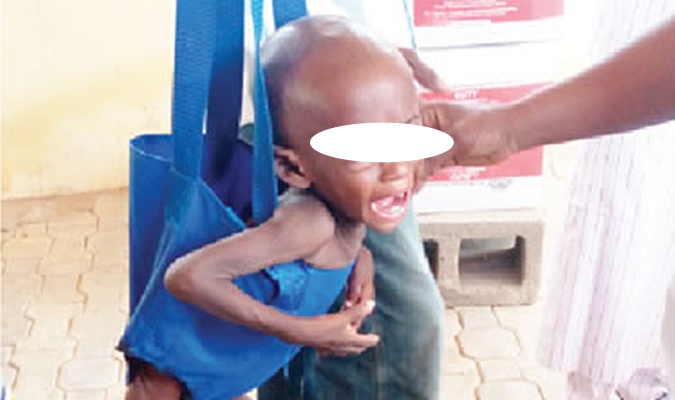
Nigeria’s child malnutrition crisis demands urgent and sustained attention from the government and stakeholders. The country loses about 2,400 children under five to malnutrition daily. One million Nigerian children die before their fifth birthday annually due to various preventable illnesses. This equates to 100 children every hour. This tragedy underscores the need for comprehensive intervention.
According to the Global Hunger Index, the number of malnourished children increased from 9.3 per cent to 15.9 per cent in 2023. Over 12 million Nigerian children are stunted, while three million suffer from rapid weight loss.
This crisis is particularly acute in the North. The Federal Government stated that 4.4 million children in the North-East and North-West are faced with debilitating malnutrition. The Director of Nutrition in the Federal Ministry of Health and Social Welfare, Ladidi Bako-Aiyebusi, stated this at a nutrition meeting in Nasarawa State.
Similar reports foreground the severity of the menace. The Federal Capital Territory Administration revealed that stunting rate was at 21.2 per cent, underweight at 12.1 per cent, and wasting at 3.0 per cent there.
The Médecins sans frontières (Doctors without Borders) lamented a dramatic increase in the admission of severely malnourished children in northern Nigeria. Bauchi, Zamfara, Kano, Sokoto and Borno witnessed spikes in malnutrition cases. The resolve to reduce the cases is hampered by inadequate humanitarian response, poor funding and logistical challenges.
According to the 2021 USAID Nutrition Profile on Nigeria, rural areas are especially hard hit, with 45 per cent of children stunted compared to 27 per cent in urban regions. Children from the poorest households are three times more likely to be stunted than those from wealthier families. A mother’s education correlates with the health of her child: 29 per cent of children whose mothers have no education are stunted, while 14 per cent with mothers have secondary education or higher.
The reverberations are grave as children suffer from impaired physical and cognitive development. The immune system is weakened, making their body susceptible to diseases. Broadly, malnutrition contributes to poverty, high healthcare costs, lower productivity, and preventable deaths.
Put differently, a gamut of woes, sickness and death is caused by inadequate access to nutritious food, poor dietary habits, terrorism, insecurity, displacement, low education and enlightenment, and economic instability. The recent surge in food prices due to inflation has further strained already vulnerable households, pushing nutritious meals beyond the reach of many families.
A new report said 172 million or 78.7 per cent of Nigerians cannot afford a healthy diet, per the State of Food Security and Nutrition in the World 2024.
Nigeria needs a coordinated and comprehensive approach to tackling the challenge. There is a need for a robust, transparent and seamless collaboration between the government, international organisations, NGOs and donors to achieve far-reaching interventions.
This includes increasing food emergency funding, diagnosing and treating malnourished children, entrenching education and enlightenment programmes for parents, and caregivers. They should implement long-term strategies to address the underlying causes of malnutrition.
The government should create guardrails against sleaze and resuscitate the school feeding programme to improve health, education and school enrolment and close socioeconomic disparities that contribute to malnutrition.
The malnutrition crisis in Nigeria is not just a health issue; it is a national emergency that demands immediate action. The future of millions of Nigerian children hangs in the balance because of this.
If the government fails to address this crisis with the urgency it requires, the consequences will be felt for generations to come. Nigeria, blessed with abundant natural resources, must not allow its most vulnerable citizens—its children—to suffer from a preventable condition like malnutrition.










